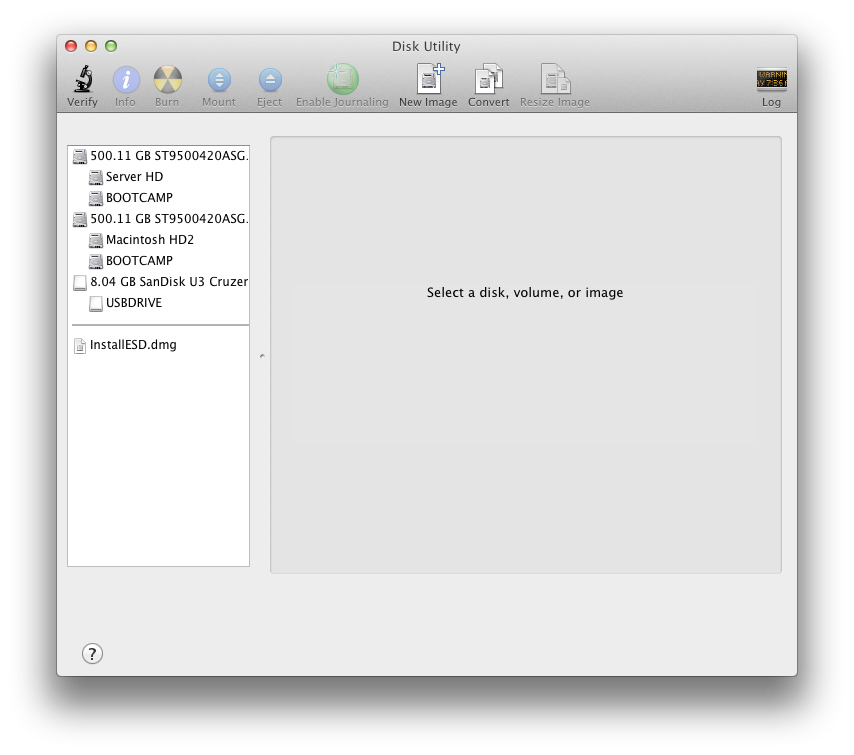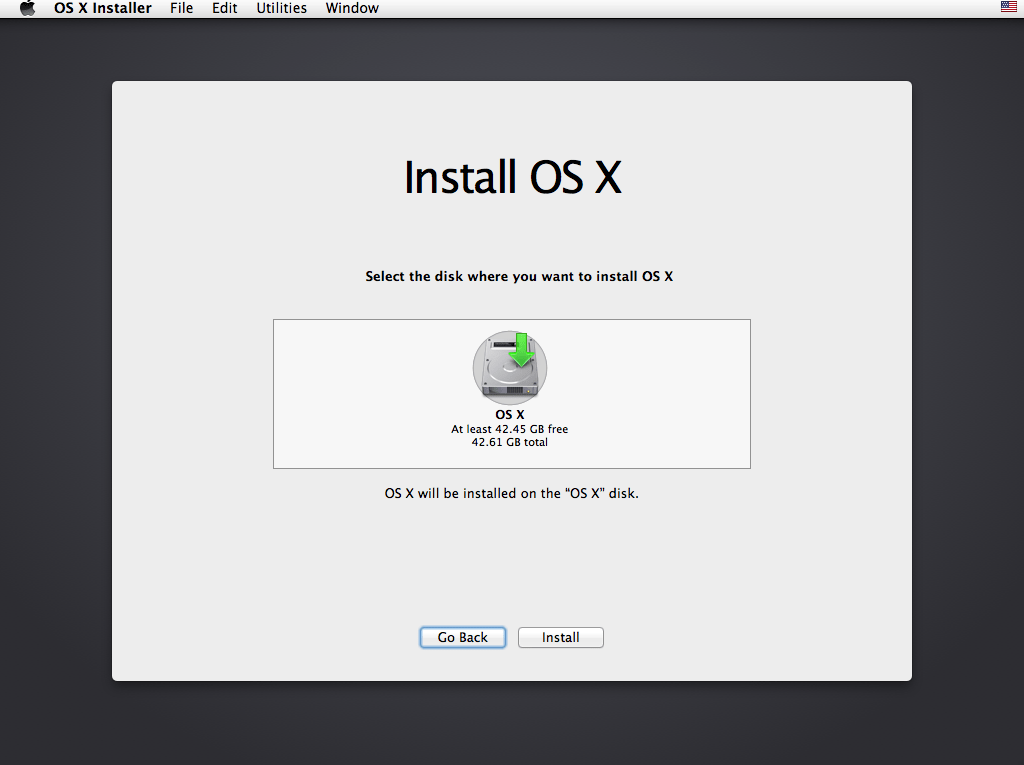Create Install Disk For Mac Os X
Dec 01, 2016 easy way how to create installer boot mac os x dvd disk or usb pendrive under windows - 2018 (link) - duration: 13:11. Channel48 106,022 views.
Technical data is gathered for the products supported by this tool and is used to identify products, provide relevant solutions and automatically update this tool, to improve our products, solutions, services, and your experience as our customer.Note: This tool applies to Microsoft Windows PC's only. Samsung m3820dw driver for os x snow leopard download.
I've been working this most of the day and found a working solution for some of the software updates that follow an installation. My solution involves setting up the hard drive based OS X (Tiger) installer (described in this thread) with a few minor modifications. Vlc player for mac os x yosemite 10.10.4.
- I’ve come up with three ways you can create a bootable OS X install drive for the Yosemite: using the installer’s built-in createinstallmedia tool; using Disk Utility; or performing the Disk.
- Oct 19, 2015 Drag-and-drop the Mac OS X Install Drive disk into the Source box At the bottom right-hand corner of the screen and click the Restore button Disk Utility will restore the OS X Install DVD or disk image to the USB drive; this process may take anywhere from 20 minutes to an hour depending on how quick the Mac is.
- Turn off the 'Ignore ownership on this volume' option in the get info window for the hard drive based installer partition that you're working with. This prevents your additions/edits from getting different ownership/group permissions than the default installer uses on the installation volume (root:wheel).
- Remove any of the spaces in the package names that you wish to add to the installer process. I don't know if it's necessary, but I noticed that none of Apple's entries had spaces, so I felt it was safest to remove them.
- Place the software update packages that you wish to add to the Mac OS X installation process into /System/Installation/Packages/
- Navigate to /System/Installation/Packages/ and right-click (or control-click) on OSInstall.mpkg and choose 'Show Package Contents' and open the 'Contents' folder.
- Using a text editor that will allow you to over-ride ownership permissions (I used BBEdit) open the following items (within the Contents folder):
- OSInstall.dist (drag onto the text editor to open, it's plain text file)
- Info.plist
- Resources/English.lproj/Localizable.strings
- Within Info.plist, add entries for each of the packages that you've added to the Packages folder. Note that if you removed spaces in the package names (see above) make sure you do NOT include spaces in your Info.plist entries. The entries must match the package names exactly! My new entries were placed just above the X11 entry and look like this:
- Within the OSInstall.dist file, locate the part the reads .. .. and add a group similar the the 'Language Translations' section directly above X11. Modify the entries to match the packages that you've added. My entries look like this: NOTE: I chose 'SoftwareUpdates' as the name for my 'Package Group' but you could choose anything you want. Again, don't use spaces. You'll see why in the next step.
- Within OSInstall.dist (further down), locate Add entries for each of the packages you've added directly above the X11 entry. My entries look like this: Note the first entry, SoftwareUpdates, marks the 'Package Group' that you're adding.
- Next, locate .. .. and add entries for the packages you've added directly above the X11 entry. My entries look like this: Make certain that your package names match exactly and that you DO NOT add the .pkg in the 'id' attribute of your tags, but DO include them in the 'file path' part of the tags.
- Locate the following entry (again further down in the OSInstall.dist file): Add entries for the packages you've added directly above the X11 entry. My entries look like this: The installKBytes figures DO NOT have to be accurate but should be close. I think they just give the installer/user an idea how much space the package is going to take up. Furthermore, it helps the installer to determine whether or not the destination has enough space to install everything.
To get my figures, I made copies of each of my packages to a temp folder on my desktop then pried them open, unarchived the Archive.pax.gz within them and then using the Finder's get info, I measured the size of the resulting files and divided the bytes by 1024 to convert to KB and rounded to the nearest integer. I know my numbers are not accurrate, but my installation works just fine anyway. - Within Localizable.strings, add entries for the 'user friendly' package names and descriptions that the installer shows to the user. I don't believe it matters where you place them within the file. My entries look like this: NOTE: You need the 'SofwareUpdates' entry in order for the package section to have a name and description within the the 'Customize' section of the installer.
- Save and close your files. If you're using BBEdit, it will want authorization in order to make changes to the files, but it WILL NOT change ownership on the files (which is exactly what you want).
CHECKING & CHANGING PERMISSIONS: If you failed to turn off the 'Ignore ownership on this volume' (step 1), like I did, you'll need to change the file permissions on your hard drive based installer partition. If you DID do step one before any other steps, you might want to check the permissions anyway.
To check the permissions:
- Open the terminal (located in /Applications/Utilities)
- cd to the root level of your hard drive based installer partition (located inside /Volumes)
- Type 'ls -lan' (without the quotes) and press enter
- Examine the file permissions. All owner and groups should be set to 0 (zero).

 To change the permissions:
To change the permissions: - Open the terminal (located in /Applications/Utilities)
- cd to the root level of your hard drive based installer partition (located inside /Volumes)
- Type 'sudo chown -R 0:0 *' (without quotes) and press enter. You will likely be required to type your admin password.
ABOUT MY STARTING POINT: I started with a Mac OS X 10.4.3 Installer DVD image, so I don't have a lot of additional software updates to apply and that's why my examples only show four added packages to my installation. Your mileage my vary.
I highly suggest that you use a partition that you can test install onto to make sure your modifications are working. I had to erase and install serveral times before I got it all figured out.
A NOTE ABOUT JAVA UPDATES: I tried to include the Java131and142Release2.pkg & J2SE50Release3.pkg packages in my installation, but the installation would fail, so I removed them.
Create Install Disk For Mac Os X Lion
---
Christopher Raymond, MacWorks owner/operator